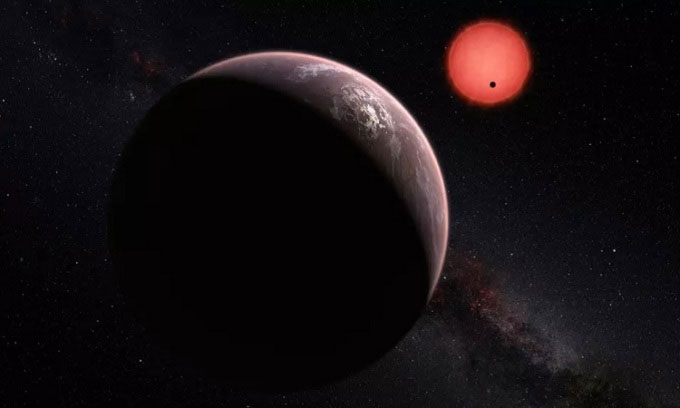Super-Earth suitable for life discovered 100 light years away
An international team of scientists recently announced the discovery of two new super-Earths using NASA's Transiting Exoplanet Survey Satellite (TESS) and the University of Liège's Search for Habitable Planets Orbiting Ultracool Stars (SPECULOOS).
These two new super-Earths are 100 light years away from our planet. One of them, in particular, could be suitable for life.

Super-Earths are a group of exoplanets in the Solar System that are made of rock and gas. They can reach a size 10 times the mass of Earth, with rocky surfaces and thin atmospheres.
Both planets orbit a relatively low-energy red dwarf star called LP 890-9.
The first planet, named LP 890-9b or TOI-4306b, has a radius of 8,368 km, 30% larger than Earth. This planet orbits its host star in just 2.7 days. NASA satellites took pictures and confirmed this as an exoplanet using SPECULOOS
The second planet, called LP 890-9c, or SPECULOOS-2c, has caught the attention of researchers. It is located slightly farther from its star than the first planet, with a radius of more than 8,690 km, 40% larger than Earth. LP 890-9c takes nearly 10 days to orbit its star and is located in the star's habitable zone.
The host star LP 890-9 is 6.5 times smaller than the Sun but half as cool. So even though LP 890-9c orbits very close to its host star, the amount of radiation it receives is still low, allowing liquid water to exist on its surface if it has an atmosphere. Researchers believe this could be a rocky planet that allows life to exist.
The team will study the planet's atmosphere more closely in the coming months to determine its habitability.
You should read it
- Learn about extraterrestrial super-Earth - Gliese 581c
- New planet appears that may have life like Earth
- Is There Life on Exoplanet K2-18b? Exciting New Results
- New discovery of life on planet GJ 1132b, 'Super Earth' is 39 light-years away
- Kepler detects three new exoplanets orbiting 'super-Earth'
- What is the most devastating natural disaster that the earth has experienced?
 Scientists reveal the secret of the formation of a strange 'gas world' suspended in the universe
Scientists reveal the secret of the formation of a strange 'gas world' suspended in the universe Rare discovery: A giant planet is forming in a cosmic dust vortex
Rare discovery: A giant planet is forming in a cosmic dust vortex Massive eruption creates 250,000-mile-long 'volcanic canyon' on the Sun's surface
Massive eruption creates 250,000-mile-long 'volcanic canyon' on the Sun's surface The end of the Earth actually happened about 250 million years ago
The end of the Earth actually happened about 250 million years ago Alien Hunting Mission Really Is Taking Place on Venus
Alien Hunting Mission Really Is Taking Place on Venus Scientists reveal how to 'renovate' Mars' climate so humans can live there
Scientists reveal how to 'renovate' Mars' climate so humans can live there